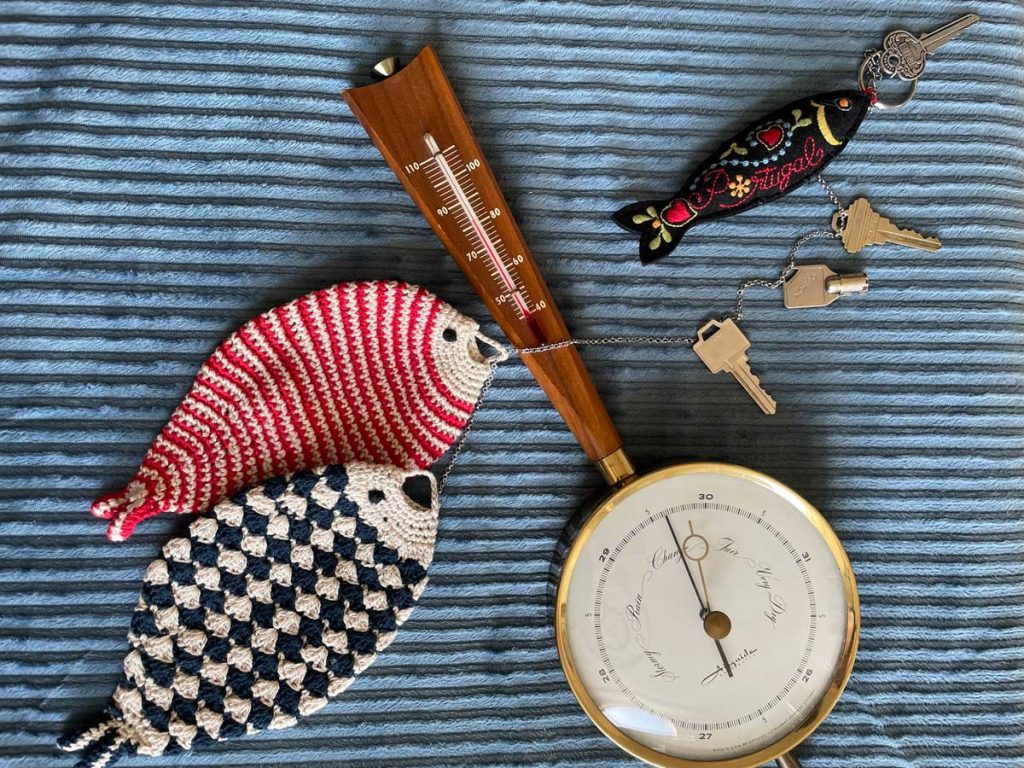Submission 2024
| Submitted by: | Alana Krug-MacLeod |
| Department: | Biological Sciences |
| Faculty: | Science |
I used a collage format to illustrate the complexity of predicting foraging behaviour in ocean ecosystems in which the environment and the species within it are continuously in flux. My research aims to unlock the mystery (the keys) of how variation (the colours, patterns and designs) in nutritional value of individual prey and different species of prey are linked (the chains) with environmental conditions (barometer) and with traits of both predators (the large fish) and prey (the small fish). The 221B key to Sherlock Holmes’ mythical flat represents the remaining unknowns and new questions generated by my research.
As climate changes, protecting ecosystems and stabilising food webs requires predicting responses of organisms to changes in sea surface temperature and other environmental indicators. I found a few clues, for instance that small environmental changes are less likely to affect optimal foraging by top predators than individual and species differences in prey. For example, a large fish would be more valuable prey than an equal sized squid. But solving the full mystery requires identifying and combining many more clues.
Was your image created using Generative AI?
No.
How was your image created?
I chose to create a collage because I wanted to use tactile objects that represent the real world and because I could not combine the range of elements required for my research directly. Every element is important. The soft blue lined fabric background symbolises the ocean environment in constant flux. The barometer is from the mid-century, and therefore symbolises how climate has changed over time. Its thermometer corresponds with how sea surface temperature was measured in the specimen collection site, while the words represent qualitative assessment. The fish came from conferences in Seattle and Lisbon, where I shared findings with researchers and fisheries/conservation managers who will use my results. The chain links the climate measurements with predator (large) and prey (small) fish, representing the food web relationships I seek to understand. The different keys represent how three factors I examined—traits, environmental conditions, and nutritional value—are essential to understanding future foraging as climate changes. The 221B key to Sherlock Holmes’ mythical flat represents gaps in knowledge.

